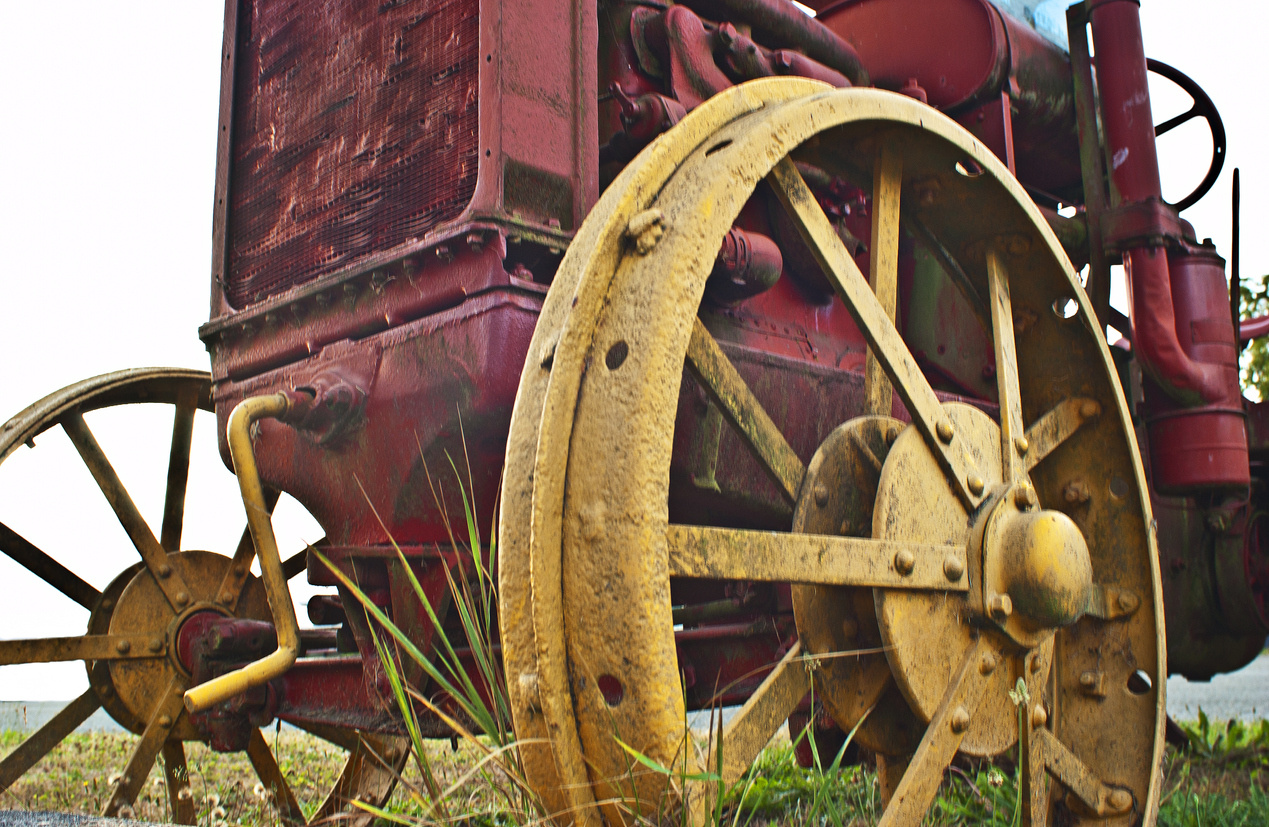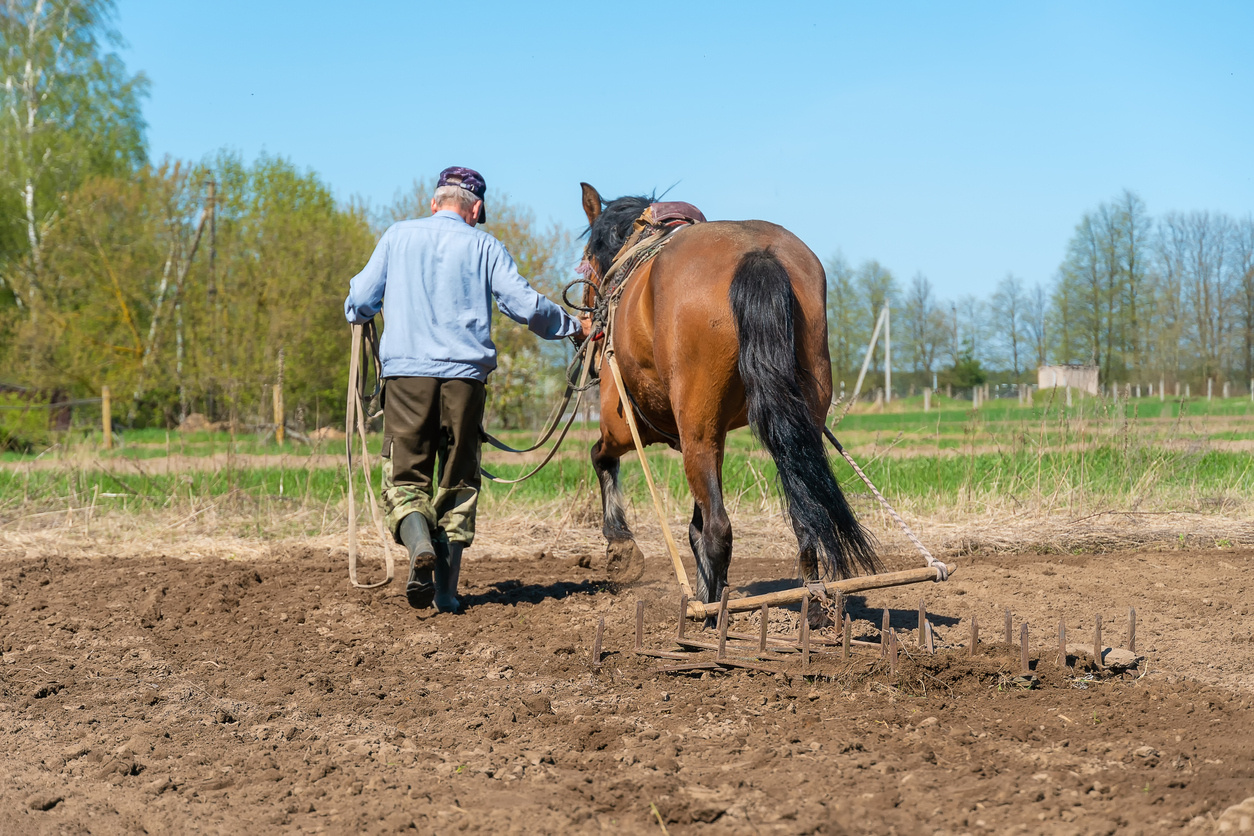Click here for the full experience: the original pdf-formatted version of this article.
Regenerative agriculture
Be careful, not everything is rosy.
Book of Bertil 22.01
PREAMBLE
The Boy Who Cried Wolf
A young shepherd, who led his flock quite far from the village, constantly indulged in the following joke. He called the villagers to his aid, shouting that wolves were attacking his sheep. Two or three times, the people of the village became frightened and hurriedly went out, only to find that the shepherd was pulling their leg, and they returned to the village annoyed. But then one day, the wolves actually did attack. While they ransacked the flock, the young shepherd called again for help from the villagers; but they, imagining that he was joking as usual, paid him no mind. The boy lost all of his sheep.
This fable shows that liars gain only one thing, and that is not to be believed, even when they are telling the truth.
In the 1985 version by Tony Ross, the wolf kills not only all the sheep, but also the young shepherd and all the villagers, too. Which just goes to show that sometimes our decisions can also have consequences on ourselves.
Introduction:
CHAPTER 1.0
The Industrial Revolution of 1820 caused a global shift from a dominant agrarian and artisanal society to an industrial and commercial society. The direct consequences of this transformation are that it has profoundly affected agriculture, the economy, law, politics, society, the environment, and religious beliefs. Then, as in all the great social transformations, new philosophies and new nonconformist movements and oppositions were created. In the world of wine, the successive movements of counterculture and subculture particularly affected the viticulture and philosophical aspect of winemaking.
The first great movement was that of Rudolph Steiner (1861-1925), who imposed a holistic approach of humans with nature, which brought us Anthroposophy, the Waldorf Institute, and biodynamic agriculture. Then, there was the organic agriculture movement (1920-1950), which defended the values of healthy agriculture for a healthy body. Following the organic agriculture movement in the 1960s to the 1980s was the philosophy of natural wine. Jules Chauvet and Marcel Lapierre in Beaujolais were the fathers of the natural wine movement. This new counterculture was opposed not just to mass industrial agriculture, but also to mass industrial winemaking, and thus they were the first to include holistic winemaking as part of the movement. So in the natural wine movement, the grapes must be organic (agriculture) but must also be fermented in a natural way, meaning without external inputs such as sulfur, silver or chemical yeasts.
Countercultural Movement
CHAPTER 2.0
Recently, attention has turned to the latest countercultural movement in the agricultural world: Regenerative Agriculture. Initiated in America in the 1970s and 1980s by Robert Rodale and his son J.I.Rodale (among others), Regenerative Agriculture acknowledges the inherent climate impacts of agriculture, and thus reflects a demand for direct and global environmental action. It is an interventionist movement that advocates for resolute actions following the philosophy of stewarding a healthy planet.
22.2.1 What are the fundamentals of Regenerative Agriculture?
Regenerative Organic Certification (ROC) embraces an agricultural philosophy that goes beyond sustainable. Because our agricultural systems already deplete resources, it is not enough to sustain the levels we are at, we must actively work to replenish, or regenerate, our resources. Farms practicing regenerative agriculture do so by following a “virtuous cycle of healthier soil, healthier plants, healthier people and healthier ecosystems,” with the goal of leaving the world a better place.
22.2.2 The three pillars of regenerative agriculture are:
SOIL HEALTH
Foundational to Regenerative Agriculture is the focus on increasing biodiversity and soil health. Regenerative Agriculture outlines how best achieve this by the use cover crops, minimizing soil disruption (i.e. low-to-no tilling), eliminating synthetic fertilizers and chemical pesticides, and implementing carbon sequestration (the process of capturing and storing atmospheric carbon dioxide) to reduce global climate change.
ANIMAL WELFARE
Regenerative Agriculture also mandates that we protect the “Five Freedoms” of animal welfare, which means animals must be grass-fed and pasture-raised, and they must not live in CAFOs or undergo extensive transport. The animals raised on ROC farms are guaranteed access to fresh water, comfortable shelters, and a healthy diet. They are also raised and killed humanely.
SOCIAL FAIRNESS
The third pillar ensures fair pay and living wages for farmers and farmworkers, safe working conditions, and the ability to build freedom of association.
Regenerative Organic Certification makes it easy for vineyards and wineries that are already following organic and biodynamic farming practices to become ROC as well. If you see the ROC designation, just know that the vineyard or winery is organic or biodynamic, too.
The Rhizosphere and Symbioses
CHAPTER 3.0
I can already see you rolling your eyes, and inwardly questioning the interest for you to read this agricultural dissertation when you tell yourself that this subject has nothing to do with your Bacchante education.
I understand, but I implore you to continue reading the following, because it will change your vision of wine, of people, and of the earth. I promise to be as concise as possible, although this subject has fascinated me for a long time. Moreover, recently, thanks to the writings of my great friend and professor/philosopher Emanuele Coccia (The Life of Plants: A Metaphysics of Mixture), I have continued to deepen my metaphasic and ideological reflections on the subject.
22.3.1 What if the survival of humanity rested on fungi?
The main pillar of regenerative agriculture is based on very ancient sciences that were taken up by Steiner (biodynamics) and the philosophy of organic practices. It is a belief in a physical, spiritual, and holistic connection between plants, life (i.e. the ecosystem), and humans. This (scientific) approach proves the importance of soil microcosms and the power of fungi in the rhizosphere.
In the soil, there are of course the roots of plants, but there is also a whole procession of organisms gravitating around the roots. This cohabitation consists mainly of bacteria and fungi that interact with plants, which often benefit them. This symbiosis between plants and fungi is called "arbuscular mycorrhizal" (AM), and this interaction has probably existed for more than 450 million years. It is a true symbiosis in that is is a relationship based on an exchange of good practices. The symbiotic fungi, such as our AM fungi, gets its necessary carbon from the plant, while it gives water, nitrogen, phosphate, and mineral salts that they take in from the soil. This interaction doesn’t just benefit the plants and the fungi, but also allows for the existence of other living beings in the subterranean.
The roots of plants, such as our beloved grape vines, can feed themselves and take water and minerals from the soil on their own, without the fungi’s help. However, because the vine is immobile, it will quickly create an area, called “depletion”, where resources are exhausted around the roots. The fungi, by their filaments connected to the root of the vine, can explore ten times more soil volume than the root, and thus acts as an extension. Thus, in times of drought, the fungus helps the plant acquire water and minerals, such as phosphate, farther and deeper than the roots can, which allows the plant to better resist diseases and climatic stresses. In addition, the branched underground filaments of fungi are connected to several root systems, sometimes of different species, and so they can form bridges and allow the transfer of nutrients from one to the other according to the deficiencies and needs of each. They will also contribute to the creation of micropores in the soil, allowing for better water infiltration and retention. If that weren’t enough, these underground fungi are also an incredible physical shield for the vine.
The fungi can capture and isolate chemicals from industrial agricultural products, as well as pollution in the soil from acid rain (which includes heavy minerals from factories and industrial production). Thus, fungi prevent plants from being affected by this pollution during their irrigation.
22.3.2 Plowing
In conventional agriculture, plowing and the application of fertilizers leads to a rupture of the plant-fungus symbiosis, and a loss of diversity. This is because plowing will break the fungi’s mycelial networks. And by applying fertilizer, the plant readily has access to mineral phosphate and thus has no need to resort to mycorrhizal symbiosis. While the mycorrhizal symbiosis is helpful to the plant, it does cost the plant carbon, so by applying fertilizer, the carbon-phosphate barter between plants and fungi is no longer necessary. Without giving the carbon for the fungi to store in the soil, it is instead released into the atmosphere as CO2, causing an increase in the destruction of the ozone layer and indirectly destabilizing the ecological balance of the planet. And without the fungi’s physical protection from the harmful pollutants, the fruit will then carry these pollutants, and thus produce fruits of low nutritional and aromatic quality. In addition, the disappearance of vegetal soils (different grasses) and intense plowing will cause soil erosion and a complete destabilization of the balance of the ecosystem.
The practice of regenerative agriculture also requires the presence of animals in the vineyard, encouraging a complete cycle in the contribution of the animal and fodder plants. By grazing the grass in the vineyard, the sheep control the growth and diversity of plant regeneration while providing complementary nutrients to the soil by the natural spreading of their excrement (manure).
22.3.3 The direct impact in your glass – Action. Reaction
For the artisan winemaker, the more work there is on the well-being of the vine, the less interventions, and manipulations will be needed in the production of wine (oenology). A healthy grape will produce a quality wine with minimal intervention (meaning few to no inputs). This guarantees wines that are low in alcohol and balanced, without the need of heavy products (added chemicals) or extra processing. So, when you choose a wine of regenerative practice, you are taking a small step for the planet, but a big step for your health and the survival of humanity.
The hidden side of fashion
CHAPTER 4.0
Organic, Biodynamic, Natural, and now Regenerative, are practices embedded in philosophies. But when they become fashionable and consumers look to buy wines made with these practices, unfortunately many unscrupulous opportunists will use the label, and sometimes official certifications, without respecting the integrity behind the ethics and the philosophy of the movement.
You will say to me: "Even the official certifications? How and why?" If this is an official certification, it should automatically guarantee the integrity of the certification, right?
Not really, because the certifications, such as Sustainable, Organic, Demeter (biodynamic) and ROC (Regenerative Organic Certification), focus and legislate only on the agricultural aspect, and therefore do not regulate, or barely regulate, the winemaking practices. So, the guarantee from the certification stops at the door of the cellar. So, a winemaker could farm biodynamically and achieve the ROC certification, but then use inputs, chemicals, organoleptic handling, and mechanical transformation processes in the cellar. And when we call these wines "Natural Wine" or "Raw Wine", it’s even murkier, because anything is possible—there is no certification for raw or natural wine.
Conclusion:"But then who to believe and not to believe?"
For you, the consumer, the only way to be certain that the wine has been produced on standards of wine and wine integrity, from vine to bottle, is to be certain of the integrity of the winemaker, not only in the agricultural practice of a movement, but also in the belief and philosophical and ideological practice of it. At Bonde Fine Wine, we call them "Authors' Wines”, and they are from the eco-responsible practices. This is because wines have a soul, that of the land from which they come, of the air on which they have been nourished, and of the soul of the man who has produced them.
Because at Bonde Fine Wine we are certain and convinced that "wine does not lie". So, we will never cry wolf just, for the fun.
*Memorandum: My words and opinions in these newsletters are and would always be personal, and I intend to offend. I always accept that others have the full right and duty to challenge me, to argue, and, if it is necessary, excommunicate me from their beliefs (often dull and hollow) because I would act the same way if it were the other way around.







